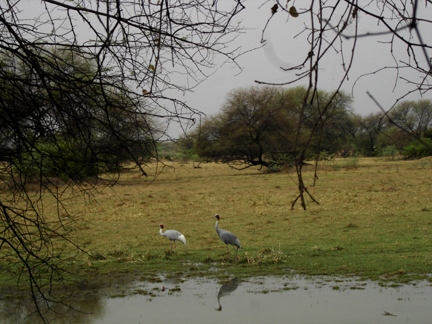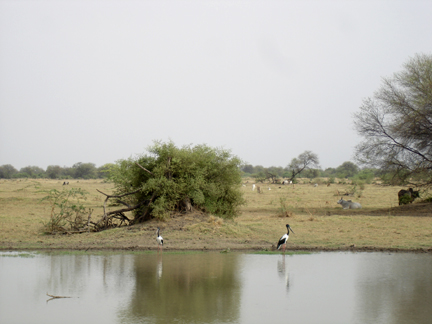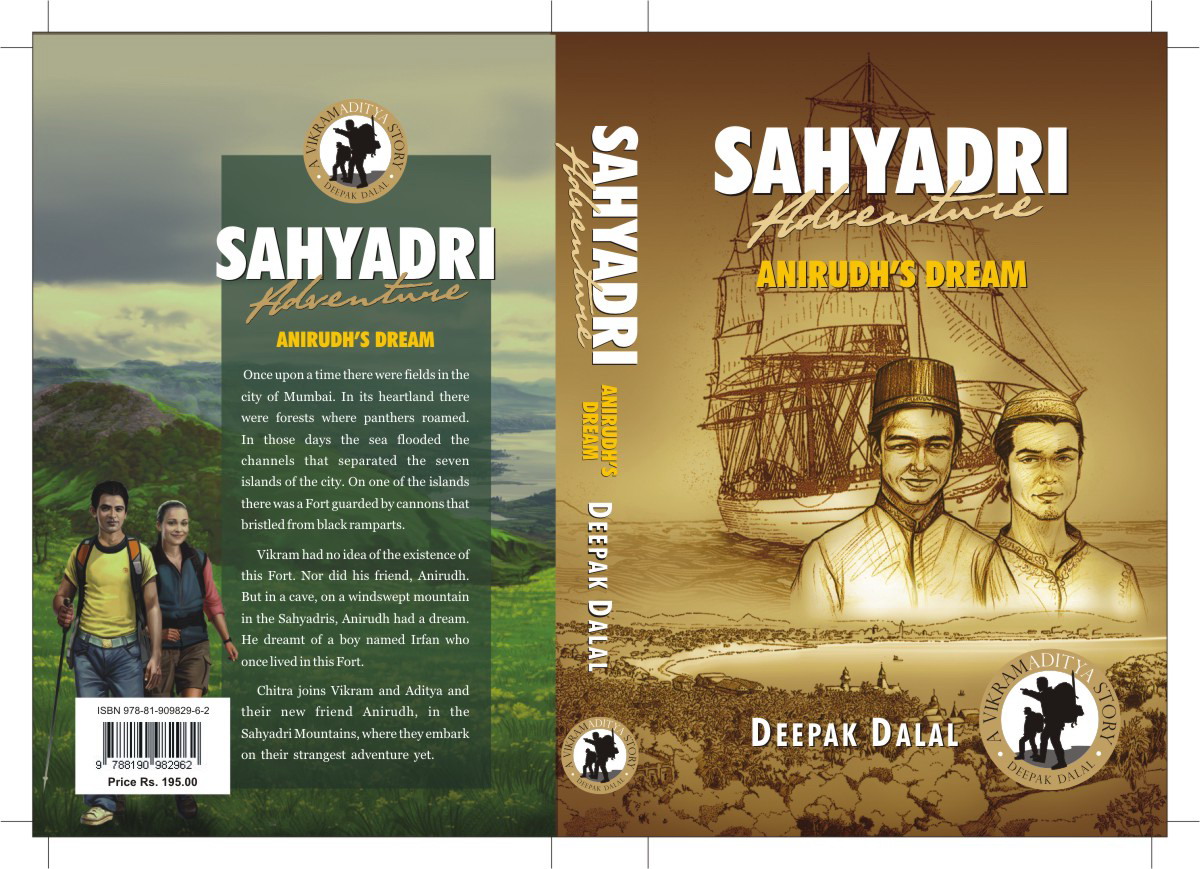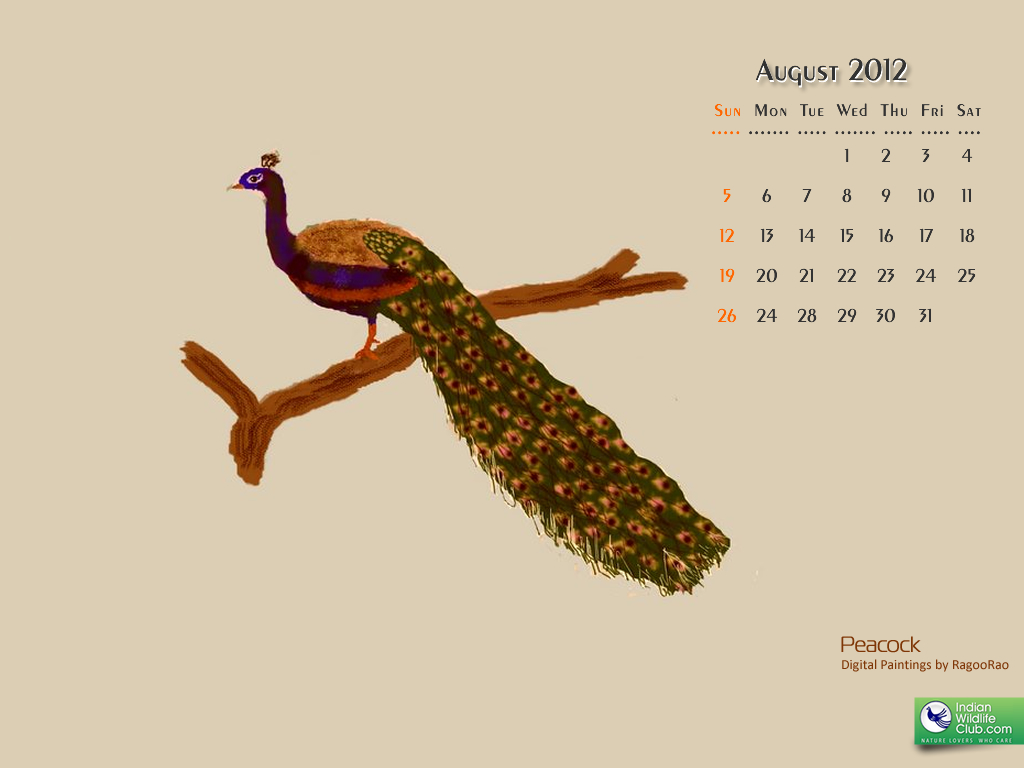Bird Watching
Operation Blackbird
-Priya Phadtare
This is an account of the enthralling three days my friend Boamao and I spent at the Keoladeo (Ghana) National Park, Bharatpur, Rajasthan.

Day 1, June 16, 2012
The task of finding the bus which would take us to Bharatpur, Rajasthan and the urgency to reach in daylight to be able to look around the national park for a couple of hours before the sun went down.
The adventure started the moment we stepped out of our hostel rooms.
My friend and I are not the most organized travellers when it comes to transportation and have been quite unfortunate when it comes to reaching in time or boarding a bus on time. The trip before this one had us waiting for a bus to depart for a good eight hours
and this time it took us more than two hours of travelling across the city in the maddening heat with our backpacks in order to find the correct place to board the bus from, considering the million bus stations operating in Delhi. Fortunately this time around
we performed only a little better as we managed to reach the I.S.B.T. at Sarai Kale Khan in the nick of time which saved us the misery of having to wait a few more hours for the next bus out!
That is what we thought then. We happened to board an exceptionally slow bus. It travelled only slightly faster than a tractor. Both of us became extremely impatient. The world started to look unpleasant outside the vomit streaked windows. The only saving grace
was the mad excitement about the trip and Led Zeppelin!

So we reached at eight in the night at the park. It was pitch-dark. They don’t have streetlights in a forest you know. A couple of guards at the gate asked us to walk down the two kilometer long dark lane leading us to the forest rest house as they had no means
of transportation. The Nat Geo pen-torch that I had won came of no use as the batteries had died, the only little light that we had was from a mobile phone and the scarce moonlight. The bushes rustled on both the sides and our hearts thumped harder than ever,
two sounds we did not want to hear in a forest we had just stepped into for the very first time. I got my swiss knife out, you know just in case. We walked, jumping at the slightest sound of activity in the bushes around us and then we saw something which
made us stop dead in our tracks.
A huge black form walked towards us. Boamao called it an elephant. I called it a panther. We just stared at it helplessly and I wracked my brains to remember some survival tactics given out by Bear Grylls in those countless episodes of Man vs. Wild.
The thing decided to stop as well, guessing maybe from the light of the mobile phone that we waved at it. After a few seconds it suddenly moved hurriedly towards us and we could see a flash of white beneath the black, this puzzled us quite a bit. And then it
spoke to us. We breathed a sigh of relief to know that it was just a fellow tourist! We walked some more and reached the forest rest house on a tractor and the motorbikes of the forest guard officials who were kind to give us a lift. We slept badly that night
in the immense heat of Rajasthan.
Day 2, June 17, 2012
Keoladeo National Park!
Waking up at six in the morning was quite a task after a very exhausting journey and almost no sleep. The sun was not too hot and the cool breeze had not died yet. We saw a rabbit, a few Drongos, Brahmny Starlings, Mynas, Koels, Laughing Doves, a few small
birds which we could not identify but we suspected them to be the Sunbirds, Peacocks, Oriental Magpie Robins, Coucals with their echoing “oop-oop-oop-oop-oop” calls, White-breasted Waterhens, Treepies, Common Flameback Woodpeckers, Pied Woodpeckers, Red-collared
Doves, Green Bee-eaters, Indian Hornbills, villagers gathering firewood, a lot of cattle and the occasional spotting of the cheetal and the sambhar. All the birds were resident birds as the ones which migrate to the park come in the winter season only.
We walked around for about two hours spellbound by the beauty of the forest which was abuzz with activity already. It was my first time in a national park and I was still awestruck by the very fact. The sun became stronger by the minute. We were warned by some
student researchers, whom we had befriended at the rest house, about the heat and that it would be impossible to venture out into the forest beyond ten o’clock in the morning. We were already parched at eight and needed rehydration as soon as possible.
So we decided to come back to the rest house where we loaded ourselves with some food and a lot of cool drinks and set off to get bicycles at the main gate for which we had to walk some more. Once we mounted our bikes, there was no stopping us. We traced back
our path to the place where we had left our trek and with the help of a map and a bird guide book we began our journey again.
Our plan was decided for the three days. On the first day we were to explore the west, on the second day the east and the on final day the north.
On the west side of the park was a lake called the sapanmori. We travelled on a rocky path for a good kilometer or two to have a better look at the large number of cheetals, sambhars, neel gayis, monkeys, cattle egrets, the white-throated kingfisher and also
encountered a wild boar to our utter surprise! On the way back to the main route the weather became stormy with an overcast sky but eventually made way for the sun again to our dismay.
On the way to the watch-tower next to the keoladeo mandir we got to see an array of water birds lazing around on the banks of a canal which was steadily filling up with the water diverted from the Chambal river.
The Purple Heron and the Grey Heron in flight took our breaths away. These birds are usually very shy and prefer to stay in the densely vegetated areas. Their natural habitat comprises of the vegetated lake margins and the marshes. Some of these birds sat on
the tall trees heavily laden with their huge nests. It was the nesting season then. Along with these we saw the Pond Herons, the Cattle Egrets and the Kingfishers. The pond herons are usually inconspicuous birds that suddenly become startlingly obvious when
they spread their white wings in flight. A little ahead we also saw the Little Cormorant too. We spent a good amount of time putting our heads together in order to identify the birds with the help of the handy bird guide book authored by Krys Kazmierczak.
Finally we reached the bird watch tower which gave us a spectacular view of the grasslands. The park had put up a spectacular show of biodiversity for us. It seemed as if every species had come out to great us the Lion King way!

The Black-necked storks, which are quite distinctive due to the presence of a broad black stripe through the white underwing, looked splendid in the sun with the purple heron, pond herons and cattle at a little distance. We could see some jackals roaming around
in the vast expanse strewn over with the sambhars and the neel gayis. It was magical to see the sun set and it was time for us to get back. We returned with aching bodies and were pleased to find the air conditioner working and piping hot dinner served to
us on time by the extremely sweet cooks of the rest house after about twelve hours of cycling across the park.
Day 3, June 18, 2012
The hunt for the pythons!
I wanted to see a python the moment I heard about the numerous python points in the park. So we travelled eastward that day. First stop was the python point next to the sitaram mandir. A boy from the temple took us to a place with a cluster of huge python holes.
Unfortunately none came outside because of the immense heat. Then we took a very picturesque dust track to the next python point. On the way we again saw a lot of birds. The laughing dove became a matter of debate; it looked like a wood pigeon from a distance!

Two hours of rigourous cycling led us to the vast expanse of a marshland, called the Heronry, which housed the Sarus Cranes! It was considered extremely fortunate to spot the world’s tallest flying bird in action in the month of June. For an hour we sat observing
the beauties along with the breeding egrets with their yellow heads, the Lapwings, the Black-winged Stilts, the Asian Openbills, the White Storks and the Black-headed Ibis. Next we headed to the restaurant and the visitor’s information centre which educated
us on the history and details about the biodiversity of the park. As we stepped out it had begun to rain heavily which provided the park with the much needed respite from the harsh summers and it happened to be the first time in many years that it had rained
in the month of June. It was a while since the both of us had experienced rain as well and seeing the downpour in the jungle excited us beyond measure. We retired to our room drenched and decided to continue the exploration in an hour’s time.
The second leg of the day’s trek was not very fruitful in terms of bird spotting but it was a pleasure cycling through the slight drizzle and the cool weather. We reached the bird watch- tower, getting splashed with mud on the way, to admire the park coming
alive with the season’s first rains. On the way back we saw a lot of Darters or more commonly known as the snake-birds. They looked very evil with their wings spread out while perched on top of the tall trees! We also stopped by the sitaram mandir and met
Jairam Das Ji who had been very passionately nurturing the animals in dire need of care for the last twenty years.
We saw yet another spectacular sunset and came back for dinner where we happened to share the table with the CCF of the Ranthambore National Park. After a long chat we decided to call it a day.

Day 4, June 19, 2012
The final trek to the grasslands of the north.
The day was reserved for the trek till the python point and the grasslands before we departed for Delhi in the afternoon.
On the way to the grasslands we saw some monitor lizards which were unceremoniously woken up as we passed by them on an otherwise quiet and a hot afternoon. The python point yet again had no pythons on display but that patch of the forest introduced us to a
very interesting bird called the Hoopoe which looked like a woodpecker from a distance. After some more cycling we decided to sit around a small pond to observe the Indian Pond Heron and the Chinese Pond Heron during their breeding season. They are known to
breed colonially and are not safely distinguishable from each other. By then it was past noon and we had to get to the bus stop early. We met the DFO to thank her who kindly arranged a vehicle for us till the bus stop.
It was hard to say a goodbye to the three days of crazy fun at the Keoladeo National Park and we vowed to come back to it in the winters for a vacation of a lifetime. The park should be on the top of the list for all the bird lovers!
|
Book Reviews
Sahyadri Adventure – Anirudh’sDream
by Deepak Dalal
Deepak Dalal chucked up a career as a chemical engineer to write stories forchildren. He lives currently in Pune with his wife, two daughters and severaldogs and cats. He enjoys wildlife, nature and the outdoors. The Sahyadri Hillsof Pune are a short journey
from his home. When not at his desk writing, he iseither trekking their slopes or cycling their valleys.
The VikramAditya series of books are ideal school readers. It is breadth of theIndian experience they provide that appeals to schools. The stories take thereader on a magical journey from Ladakh to Lakshadweep, from the AndamanIslands to the Sahyadri, and across
the great forests of India. Importantly,the stories deal with critical issues like environment, wildlife andconservation. The stories create a connection between schoolchildren andwilderness areas – adding a dimension that is sorely lacking given the urbannature
of their lives today.
Synopsis
Once upon atime there were fields in the city of Mumbai. In its heartland there wereforests where panthers roamed. In those days the sea flooded the channels thatseparated the seven islands of the city.
On one of the islandsthere was a Fort guarded by cannons that bristled from its black ramparts.
Vikram had no idea ofthe existence of this fort. Nor did his friend Anirudh. But in a cave, on awindswept mountain in the Sahyadris, Anirudh had a dream. He dreamt of a boynamed Irfan who once lived in this Fort.
Chitra joins Vikram andAditya and their new friend Anirudh, in the Sahyadri Mountains, where theyembark on their strangest adventure yet.
In Deepak's own words
"Animals and birds are doubtless the main draw of a forest, but there ismore. No forest experience is complete without absorbing the peace andtranquility of a wilderness area. Imagine the absence of the rumble of traffic,of the bustle of humanity, of the drone
of engines and motors that run ourworld. Take in instead the rustle of the wind through the trees, the call ofbirds and animals, and the serenity of a forest. Understand what primal humanbeings enjoyed and what cities and civilisation have robbed us of – the
grandeurof nature."
Order this book online at
http://www.wildscapes.net/product-details.aspx?prdId=47

|
Calendar of the month
RagooRao from
Mysore has done some beautiful digital paintings, which we have converted into monthly calendars. Please download these calendars free and use them as your desk top wall paper.
By clicking on RagooRao's name, you can read the numerous articles he has written for IndianWildlifeClub.com. He is also a superb nature photographer.
To download the calendar suitable for the size of your desktop, please click on the link below.
http://www.indianwildlifeclub.com/Calendar/MonthlyCalendar.aspx

|
General
Why must you vote for our Wilderness Conservation Exchange?
-Susan sharma
Given below is an invitation for Volunteers from http://www.naturewildlife.org/
Inviting Volunteers for Internship Oppurtunity
Nature Environment & Wildlife Society (NEWS) are looking for active students for internship programme in our organization for 1/3/6 months. We would be requiring students with background from Sociology for livelihood and awareness programme, and Zoology, Botany
and Environmental Science students for biodiversity programme.Students are required to have a good knowledge in Bengali (read, write and speak), English and should be computer literate.Certificates will be provided to the students at the end of the programme.
The activities will stretch over:
* Intense field work
* Two three day outstation visit per week, ( if any)
* Scientific data collection, analysis, management
* Community outreach activities
* Report writing and documentation
* Students are expected to visit office daily
Students would be paid a stipend of Rs 1000 per month and all the field expenses will be taken care of by NEWS. Each student would require a permission letter from there institution (either from their Principal or from the authorized head of their respective
department)
TO apply please send your recommendation letter and your CV at :
Nature Environment & Wildlife Society
Email: news_kolkata@yahoo.co.in
10 Chowringhee Terrace
Kolkata-700020
Ph. 033-22234148
There are many such opportunities all over India and many of our Club members have been writing in asking for volunteering opportunities. If the Club creates an exchange connecting Institutions needing Volunteers with potential volunteers, we can fulfil
a long felt need.
That is how the project "Wilderness Conservation Exchange" was born. We have entered the business plan for the same in a Business Plan Challenge Round initiated by SWF (Switzerland Wildlife Fund). SWF, are seeking to draw attention to the health of Tropical
Forests by supporting Initiatives that will help conserve Tropical Forests. Among other parameters, a business/action plan participating in the Challenge will be shortlisted based on the number of Votes a Plan garners.
Team IWC is requesting You to Vote for "Wilderness Conservation Exchange" a start-up being promoted by IndianWildlifeclub.at the Swiss Wildlife Fund Challenge managed by www.Ennovent.com
The Procedure for Voting is
1.Click on the Link http://www.Ennovent.com and enrol as a Member at Ennovent..
2.Activating your Membership takes you to the Ennovent Home Page again.
3. Click on the Image with the logo of WWF to access the Challenge we have entered.

4. Here you will see the Challenge Table - Companys/Start-Ups/Ideas.
5.Click on start -ups
6.You see a list of entries and a VOTE button opposite each
7.Select 'Wilderness Conservation Exchange' by IndianWildLifeClub.com. Click on VOTE button and it will immediately turn to VOTED.
Making the Wilderness Conservation Exchange a success can depend on your vote!
|
Photography
Online photo exhibition
-Susan Sharma
In this digital age where “everyone is a photographer”, we decided that the time is ripe for starting online photo exhibitions.
The 3D wall photoexhibition by members, is a new feature we have added.
Have a look at Rahul Lamba's "Bees, Butterflies and Dragonflies
http://www.wildscapes.net/photoExhibition.aspx
What makes a good photograph? Great photos are easy to spot. We know them when we see them, but hard to pin down and define what exactly makes them great. For me a great photo has all the elements of a good photo and has the abilty to connect with the viewer
instantly. Composition, good light, aesthetics, expression, capturing a moment, etc have become so much easier to manage, thanks to the era of digital cameras with loads of simple to use feaures. But is the photograph telling a story?
See for yourself by looking at Rahul Lamba's exhibition.
Rahul Lamba is a nature lover. "Having used all 3 generations of cameras (Fully Manual, Analog & now Digital) Wildlife Photography was only a natural progression. Love being in the outbacks and shooting anything that
is wild, with a focus on lesser fauna of India (Odonata, Butterflies and other insects)." For more of his photographs, visit
http://www.flickr.com/photos/64786738@N05/
For high resolution images contact Rahul at
Rahulsingh Lamba(rahulsingh.lamba@yahoo.in)
|